Bager's blog
Driven by major manufacturers in my country, air sterilization cleaners have undergone earth-shaking changes. People no longer need simple and practical air sterilization cleaners. The comprehensive needs such as functionality and practicability are further improved. Next, let's take a look at the development trend of air sterilization cleaners!

At this stage, consumers pay the most attention to green environmental protection when purchasing or purchasing air sterilization cleaners. Therefore, in order to meet the needs of consumers, green environmental protection has also become the most basic principle in the research and development process of air sterilization cleaners. In the process of product design of air sterilization cleaners, resources and the environment should be considered comprehensively, and various factors should be continuously optimized in terms of quality, function, development cycle, cost, etc. so that the product can be used. during production. The negative impact is minimized, and the performance and indicators of the designed product can also meet the needs. Therefore, in the design process, environmental protection and energy saving should be taken as the starting point and the most basic goal of the design to ensure that the product has the least impact on the environment.
(2) HumanizationHumanization is the most important development direction of future industrial design. So what should be humanized in the design and production of products? Designers have the greatest influence on this issue. In the process of product design, the designer should inject functions and forms into the humanized design as much as possible, and endow the product with humanized characteristics, so that the product can not only complete the most basic functions but also give a certain personality and emotion. As for life, from the aspects of appearance, color, performance, etc., as well as consumers, to ensure that these factors can be effectively combined, and ultimately humanized.
(3) High-tech intelligenceIn the design process, the high technology and intelligence of the product are mainly reflected in the ability to greatly improve the working environment of the operator, reduce the workload of the operator to a certain extent, and improve the efficiency of work and operation. In addition, it can also ensure that the construction can be completed according to quality and quantity in some relatively dangerous workplaces, solving construction difficulties; further improving the reliability of equipment, and reducing maintenance costs. In addition, intelligence is also achieved when diagnosing equipment failures. Maintenance personnel does not have to spend a lot of time understanding the fault and making targeted repairs. Consumers enjoy high-quality life through product experience, which promotes the development of air sterilization cleaners.
Summer is coming, and many people have a question, do you need an air purifying disinfector when there is no smog in summer? Because everyone thinks that in the summer and there is no smog, it should be regarded as a time when the air quality is better, especially after it rains, the air becomes extraordinarily fresh. So, is an air purifying disinfector necessary in this case?
But in fact, relevant agencies have done indoor air testing in summer, and finally found that the indoor air pollution index in summer is about 20% higher than that in other seasons. Is this a bit beyond the expectations of many people? So why is indoor air pollution so serious in summer? In fact, there are many reasons. For example, due to the high temperature in summer, it is easy to cause the accelerated release of indoor pollutants such as formaldehyde and benzene. Moreover, many people now use air conditioners as a tool to reduce heat. It may be a night when the air conditioner is turned on, and the doors and windows need to be closed to turn on the air conditioner, which will naturally allow indoor air pollutants to circulate infinitely indoors.
In addition to the above reasons, there is another reason because of the high temperature in summer, which causes the room to be humid after the rainstorm, especially in the south, which happens in the summer of June. The humid and high-humidity environment also easily creates conditions for the breeding of bacteria and viruses. They can not only cause physical discomfort to people but also spread through people’s behaviors such as talking and coughing and finally evolve into epidemic diseases.
In fact, smog is no longer the primary requirement for people to choose an air purifying disinfector. People have more and more diversified functions of air purifying disinfectors. For example, the function of removing formaldehyde has now become a "rigid need" for most people, especially in summer because of high temperatures. Empty can easily lead to formaldehyde volatilization. If there is no good formaldehyde removal product, it is easy to be attacked by formaldehyde, which will eventually affect the body.
In addition to formaldehyde, bacteria and viruses and the ability to disinfect are also important options for everyone to choose air purifying disinfectors. At present, most of the mainstream air purifying disinfectors on the market are purified by filters, which can not only sterilize and disinfect (such as H1N1 virus, Escherichia coli, Staphylococcus aureus, etc.), but also remove air pollutants such as formaldehyde, pollen, smoke, and odor. And the most important point is that the disinfecting rate of air purifying disinfectors on them is mostly above 99%.
Now everyone knows whether air purification is necessary for summer. In addition, we need to pay attention when opening the air purifying disinfector. Before opening the air purifying disinfector, we must close the doors and windows, otherwise, it will affect the air purification effect. Place sundries, especially do not block the air inlet and outlet of the air purifying disinfector. Placing the air purifying disinfector in the middle of the room can better exert its purifier effect.
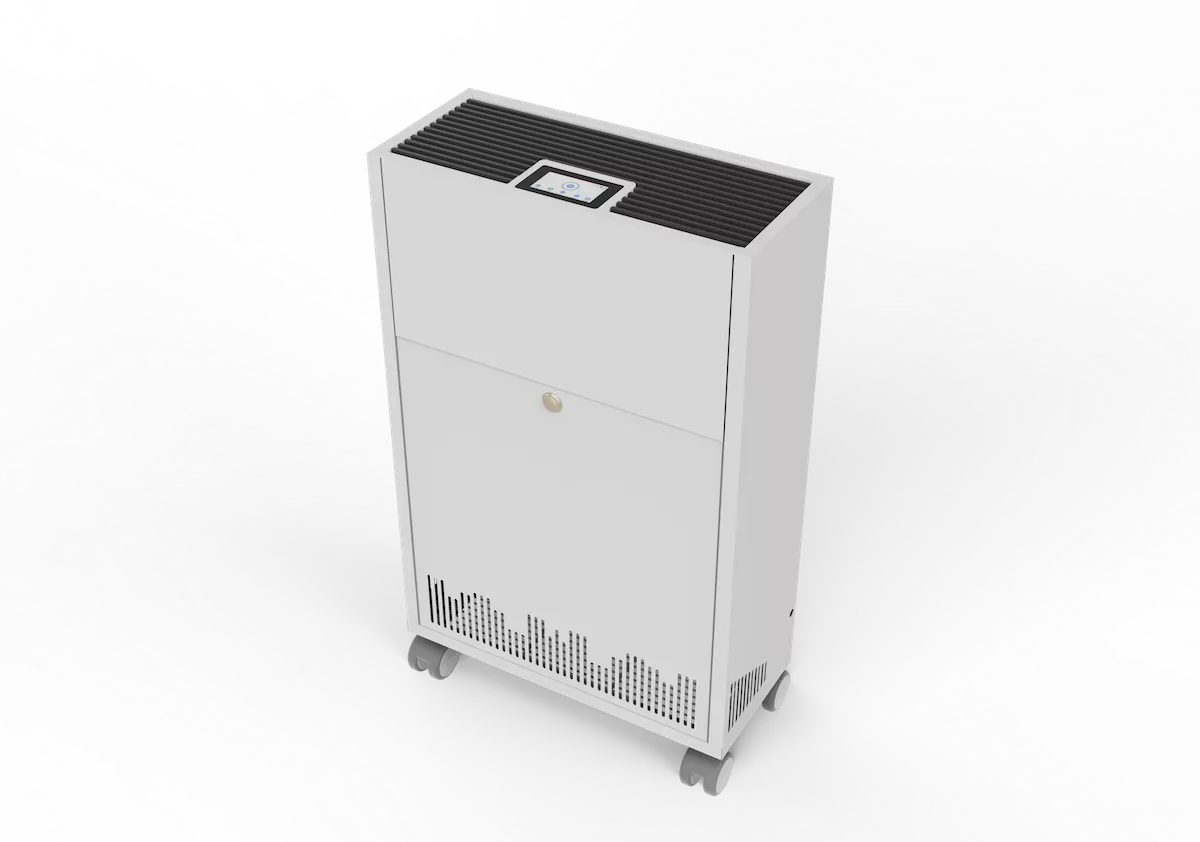
Finally, when choosing an air purifying disinfector, you should pay attention to the working noise and filter replacement. To check the noise value of the air purifying disinfector, you should look at its maximum air volume, so as to assess whether it will affect normal use. The filter replacement cycle is generally 6 -12 months, choosing a more cost-effective brand will save a lot of money.
Kepler Environmental Technology (Suzhou) Co., Ltd. is a manufacturer specializing in the development and production of Ultraviolet air purifying disinfectors. It has been focusing on the air purification industry for many years and is committed to providing customers with LED air purifying disinfector LED, air purifying disinfectors, etc., want to know more about air Disinfection machines information welcome attention and consultation.
After buying Air Disinfector for a small space, many families feel that its effect is not obvious, or even ineffective. In fact, this is not only related to the product itself, but also has a certain relationship with the way we use it, so how do we make the product in the process of use? Get a big play?
1. Regularly check the filter statusDuring the use of an Air Disinfector for a small space, the filter will gradually accumulate a certain amount of dust, and the effect of the product will gradually deteriorate. Therefore, you must develop the habit of regularly checking the use of the filter when using the product, and clean it if necessary. Just follow the instructions for cleaning, usually 1-2 months to check.
2. Wrong filter cleaningMost of the multi-layer filters in the Air Disinfector for small spaces have different materials, so it is necessary to judge how to clean the filter according to the material of the filter. Not all filters can be washed with water or exposed to the sun. For example, general aluminum alloy glass fibers or general plastic fibers can be washed with water, while non-woven fabrics cannot be washed with water, only dust can be removed. In addition, most HEPA filters cannot be washed with water, and can only be cleaned with a vacuum cleaner or a brush, while particles such as activated carbon can only be exposed to the sun in addition to their volatility, and cannot be wetted, otherwise, the effect of the filter will be affected.
3. Turn on the air purifier for a long timeFor peace of mind, many families turn on the Air Disinfector for a small space 24 hours a day. In fact, this approach not only cannot increase the cleanliness of the indoor air, but will lead to excessive consumables for the Air Disinfector for small spaces, increase the cost of water use, and reduce the life of the filter. Effect. Under normal circumstances, it can be opened for 3-4 hours a day, and there is no need to open it for a long time.
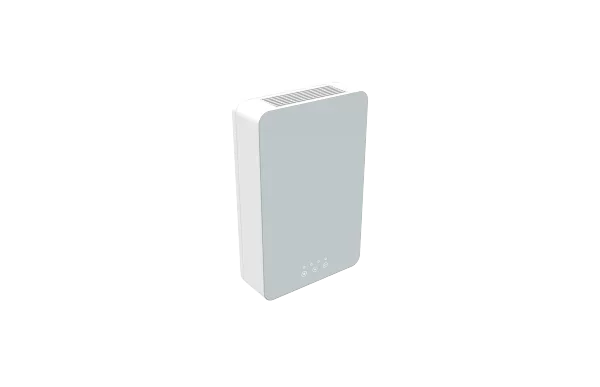
As an air Disinfector for small space suppliers, China Bagel has many air Disinfectors for small spaces on sale, with high quality and excellent effect. Welcome to buy.
At present, many consumers are prone to fall into misunderstanding when purchasing Large communal areas' air Sterilization purifiers: the higher the filter grade, the better. To this end, it is necessary to reshape the correct concept of the level of large communal areas' air sterilization purifier filters.

Analysis: The purification principle of the HEPA filter is not simply to filter out particles larger than the mesh like a sieve to purify the air. Instead, it relies on the van der Waals force between the fine particles and the filter to form the adsorption effect, and it has a good filtration efficiency for particles above 0.5 μm and below 0.1 μm. Particles below 0.1 μm perform Brownian motion. The smaller the particle is, the stronger the Brownian motion is, and the more times it is hit, the better the adsorption effect. And the particles above 0.5μm do inertial motion, the greater the mass, the greater the inertia, and the better the filtering effect. In contrast, particles with a diameter of 0.1-0.3 μm have become difficult to remove HEPA. This is why the industry defines the HEPA filter grade with a filtration rate of 0.3μm particles.
Myth 2: The purification efficiency of HEPA for 0.3μm microparticles can reach more than 99.97%, so its purification effect on 0.1μm microparticles is not certain, right?Analysis: In the same way as the misunderstanding, PM0.3 is easier to break through the protection of the HEPA filter, because it is less susceptible to the influence of van der Waals force. Therefore, the Large communal areas' air Sterilization purifier filter with a 99.97% effect on PM0.3 is effective for PM0. The effect of 1 may be better, even 99.99%.
Myth 3: The higher the HEPA filtration efficiency, the better.Analysis: Anything is too much. The higher the HEPA filtration efficiency, the greater the resistance, and the actual ventilation volume will be reduced. When the air volume decreases, the number of purifications per unit time will also decrease, and the purification efficiency will decrease.
Therefore, only the most reasonable combination of fans, large communal areas air Sterilization purifier filters, and air circulation designs can achieve an excellent model.
According to a survey conducted by the Indoor Environmental Protection Center, most people are still in the smog stage when it comes to air pollution, and many people are at a loss when it comes to indoor air pollution. When judging the quality of indoor air, it is often based on smell. As everyone knows, there are not only a large number of pollutants in indoor air but most of the pollutants cannot be recognized by our sense of smell, so an air purifier is extremely important.
According to the US Environmental Protection Agency, the pollution level of indoor air is 2-5 times that of outdoor air, and it can even reach 100 times in special cases! And most of these pollutants come from all aspects of our lives and are unavoidable. And about 80% of our life is spent in indoor spaces, so it is natural to deal with these pollutants. As the saying goes: "Know yourself and the enemy, and you will not be in danger in a hundred battles", so we must first understand the characteristics of pollutants in indoor air.
The more typical one is concealment, which often looks like an indoor space with bright windows and clean windows, but in fact, it hides dirt and filth. Because most pollutants are invisible, intangible, and not even recognized by our sense of smell. It should be noted that although formaldehyde, which is more harmful to us, has a pungent odor, it does not actually reach the threshold that our sense of smell can recognize. According to the research of Seiko Northenberg laboratory in Germany, formaldehyde can only be recognized by smell when it exceeds the standard by 3-4 times.
The second is the extremely long exposure time. As we all know, we spend most of our time indoors, which also means that our physical health is endangered by these pollutants for a long time. Most of the pollutants in indoor air come from life, so they are bound to exist for a long time and have a wide variety, so the harm to our health is also complicated.
Furthermore, it is cumulative. The pollutants in the indoor air will continue to accumulate so that the concentration of pollutants will reach a relatively high level. Many people do not know this, so they let indoor air pollution be ignored. For example, the current major pollutant formaldehyde, even if it temporarily meets the standard, because its volatilization period is as long as 3-15 years and there are many release sources, the formaldehyde released by these release sources will be superimposed on each other, thus repeatedly exceeding the standard and endangering our health.
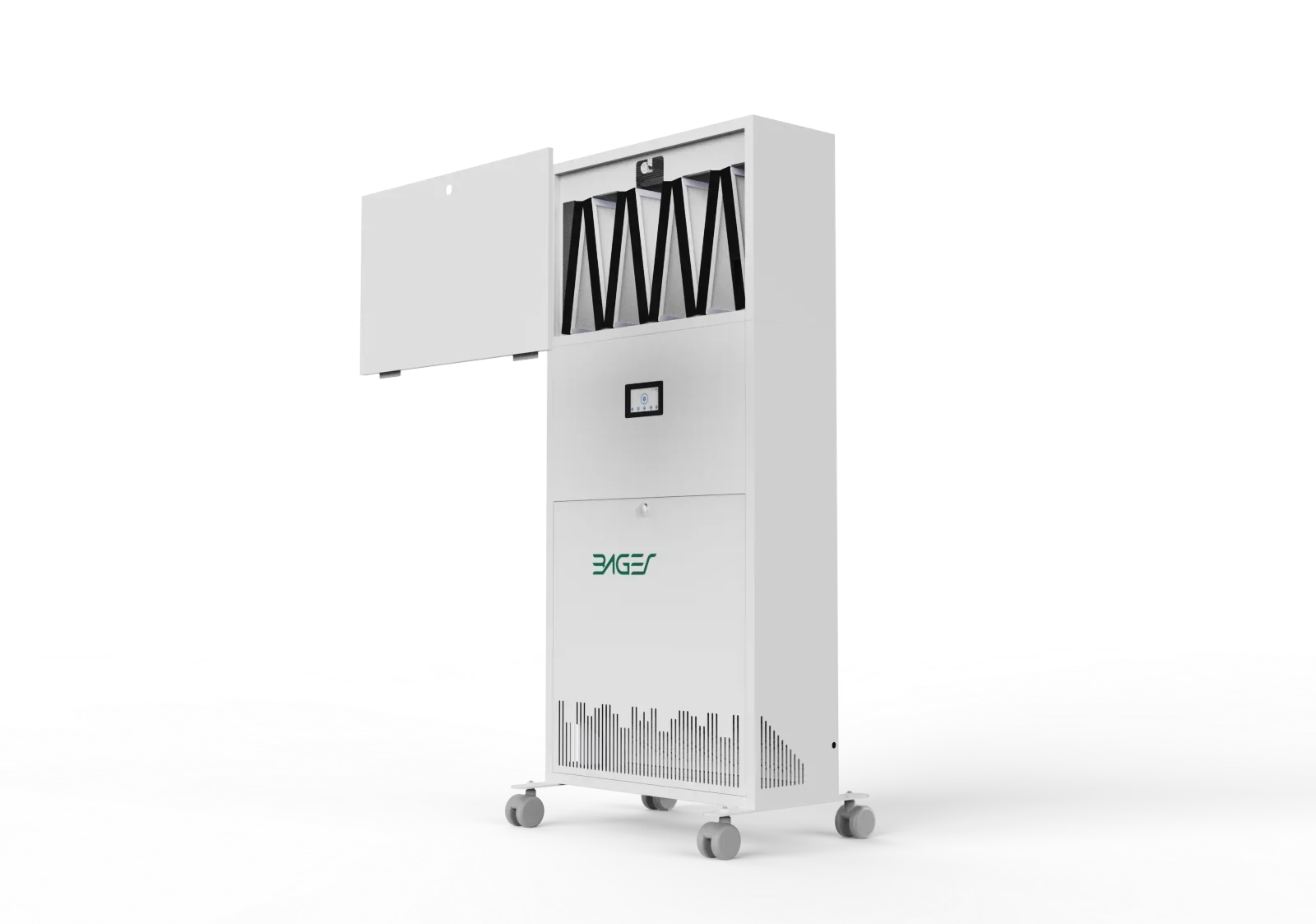
Bager is a professional air purifier manufacturer, we are of good quality, welcome to consult us.
Air purifiers refer to products that can adsorb, decompose or convert various air pollutants and effectively improve air cleanliness. It has applications in the home, medical, and industrial fields. The home field is divided into systematic fresh air systems (with two sub-categories of heat exchange and no heat exchange) and stand-alone. It mainly solves indoor problems caused by decoration or other reasons. , underground space, air pollution in cars. Due to the persistent and uncertain characteristics of the release of air pollutants in relatively closed spaces, the use of air purifiers to purify indoor air is one of the internationally recognized methods to improve indoor air quality. So what is the applicable area of air purifiers?

Air purifiers, also known as "air cleaners", air purifiers, and purifiers, refer to decoration pollution that can absorb, decompose or convert various air pollutants (generally including PM2.5, dust, pollen, odor, formaldehyde, etc., bacteria, allergens, etc.), products that effectively improve air cleanliness, are mainly divided into household, commercial, industrial, and building.
Since December 2013, "applicable area of air purifiers" seems to be a buzzword, and the media and consumers are paying attention. It is worth mentioning that a certain column drama also reported on this, saying that some air purifiers on the market currently have the phenomenon of expanding publicity, and the measured use area is only half or even less than the nominal applicable area.
So, what does the "applicable area" of an air purifier refer to, and how does it affect consumers' purchase of air purifiers? As far as I know, the most common explanation for the "applicable area of an air purifier" is - air The maximum indoor area that the purifier is suitable for. However, if you scrutinize it carefully, you will find that "the applicable area of air purifiers" is actually a relatively vague concept, and it is difficult to obtain exact results through simple calculations.
For example, the use environment of air purifiers is ever-changing, such as climate characteristics, air quality, and housing structure, decoration materials, etc. It is not realistic to use a "one-size-fits-all" method to calculate the "applicable area of air purifiers". Even if the data is available, this result will not be very objective. Therefore, using the "applicable area of air purifiers" to regulate and restrict air purifier companies obviously does not touch the pain point.
Air conditioners can also be compared here. At present, the definition and detection methods of air conditioners are clearly defined, but few people use the "applicable area of air purifiers" to consider air conditioners. Consumers choose 1 hp air conditioners or more than 2 hp air conditioners, mainly based on usage habits and recommended values. There has never been any industry standard or local standard that stipulates how many watts of cooling capacity an air conditioner must be used in a room.
Since the "use area of air purifiers" is not as accurate as imagined, why do the media and consumers regard it as a ruler? The author believes that there is a cognitive misunderstanding between the general public and air purification products, and many questions that rely solely on Shopping guides and manuals cannot be solved at all. At this time, the concept of "applicable area" appears. It is no wonder that many people regard this as the "golden rule".
If the "applicable area" cannot be used as an authoritative reference data, what should consumers use as a reference when purchasing an air purifier? As far as I know, the current clean air volume (CADR) value is a relatively objective reference data. It is mentioned in "GB/T18801-2008 Air Purifier" that the amount of clean air refers to "the quantity of clean air provided per unit time", that is, the amount of clean air provided per hour (m3). For example, the CADR value of the product is 200, which means that 200 cubic meters of air can be cleaned in one hour.
Compared with the ambiguous standard of "applicable area of air purifiers", the definition of clean air volume in "GB/T18801-2008 Air Purifier" is obviously more authoritative and operable. "GB/T18801-2008 Air Purifier" was revised and completed by the National Household Appliances Standardization Technical Committee in 2008. The content includes the mandatory standard "GB4706.45-2008 Special requirements for safe air purifiers for household and similar electrical appliances. ", which also covers the recommended standard "GB/T18801-2008 Air Purifier", which is involved in the performance and safety of air purification products. At present, mainstream air purification companies in the domestic market have also participated in the revision of this standard.
On the whole, my country's current air purifier product standards have no major problems in scientific basis, test evaluation, and methods, but a unified scale is still needed. This standard will not be an abstract concept such as "applicable area of air purifiers". In this regard, the author considers "clean air volume" (CADR).
Many people buy air purifiers blindly or simply don't know the pros and cons. In fact, the main function of the air purifier is to solve the problem of poor indoor air quality, so that the family can breathe healthily! Let's take a look at the air purifier manufacturer!
1. OxygenOxygen levels that are lower than human health needs are not necessarily a problem, but it is a problem in enclosed spaces. On days that are too cold and too hot, we don’t want to open the windows for fear of wasting the air conditioner, or we close the doors and windows for about eight hours in the bedroom, which will cause low oxygen levels, resulting in dizziness, stuffiness, etc., and unable to breathe healthily.
2. Harmful microparticlesNeedless to say, it is extremely harmful and is currently the number one health killer. Particles smaller than 2.5 have the potential to enter blood vessels directly because these particles themselves tend to be enriched with harmful substances. Particles larger than 2.5 damage the lungs and other respiratory systems, and indoor air quality
Being greatly affected, it is not conducive to healthy breathing.
3. Harmful gasesFormaldehyde and other harmful gases. Whether TVOC exists or not depends on the decoration materials and how long the room has been used after the decoration. The problem of formaldehyde is completely useless by planting greening. The activated carbon filter of the air purifier is reliable but limited in capacity and life. Using the air purifier to ventilate with a large air volume, or opening the doors and windows of the whole house for ventilation is the best solution to improve indoor air quality.
4. BacteriaIn the case of paying attention to hygiene habits and dry ventilation, I don't think bacteria are a big problem and only pay attention to them during the flu season or when there is an outbreak of respiratory infectious diseases. The human body has a certain resistance to bacteria, and the general damage caused to it can also be repaired. However, the human body has almost no resistance to PM2.5 and formaldehyde. For healthy breathing, it can be seen how important an air purifier is.
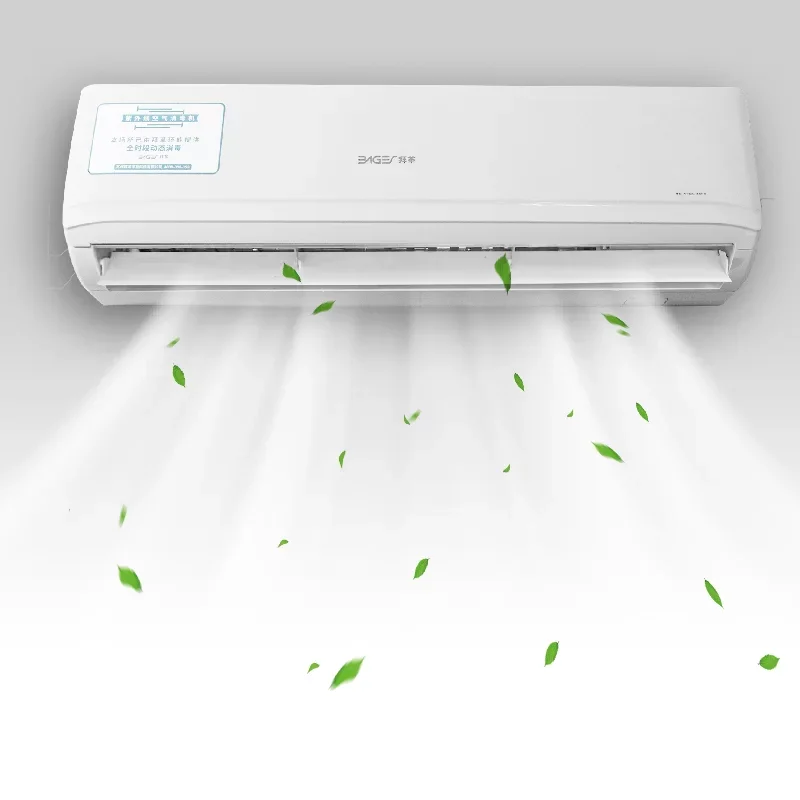
As an air purifier manufacturer specializing in air purifiers, Bager is committed to improving the quality of Indoor air so that everyone can breathe healthily. If you have any needs, please contact us!
The medical grade air sterilizer is disinfection equipment designed for various departments, wards, and other places in the hospital. The purpose of purifying indoor air is especially suitable for hospital wards, operating rooms, delivery rooms, baby rooms, premature infant rooms, general protective isolation rooms, and other places. At present, there are many brands of medical air sterilizers on the market, and the product model is even more There are all kinds of problems, and various problems are often encountered in the process of use. The following is a brief explanation of several Common problems in the use of medical air sterilizers.
Answer: Let's first look at the harm of ultraviolet rays. If the ultraviolet rays are irradiated for a long time, it will cause cancer cells. The main sterilization method of the common ultraviolet air sterilizers on the market has used ultraviolet lamps, and each machine is placed 2-8. There are different numbers of lamps, and the strength of each lamp is about 10 times that of ordinary disinfection lamps. If it is directly irradiated to the human body, it will be very harmful. Therefore, at present, most ultraviolet air disinfection machine manufacturers When designing related products will be designed an internal circulation mode, that is, the disinfection range is locked inside the cavity of the disinfection machine, and the ultraviolet rays will not leak out, so as to avoid ultraviolet rays directly irradiating the human body. Therefore, the current air disinfection machines are all Human and machines coexist.
2. What is the difference between a plasma air sterilizer and an ultraviolet air sterilizer?Answer: The core component of the plasma air sterilizer is called the plasma generator. The so-called plasma generator is a device that generates positive and negative ions, mainly composed of two electrodes. Its status is equivalent to the role of the ultraviolet lamp in the ultraviolet air sterilizer. The plasma air sterilizer uses a bipolar plasma electrostatic field to decompose and break negatively charged bacteria, polarize and adsorb dust, and then combine components such as drug-impregnated activated carbon, electrostatic net, and photocatalyst catalytic device for secondary sterilization and filtration. The high volume and rapid circulation of the treated clean air keep the controlled environment in a "sterile clean room" standard.
3. Does the medical air sterilizer need an external fan during use?Answer: The air sterilizer is different from the air conditioner, and the working principles of the two are different. First of all, the split air conditioner needs an external fan: the external fan plays the role of cooling and heating, and the indoor fan is only responsible for transmitting the generated cold or hot air to the room The two parts cooperate with each other to adjust the temperature, and the air sterilizer does not need an external fan: the air sterilizer has only one internal fan, and the indoor air is transported to the inside of the sterilizer through the fan. After sterilization, it is transported to the room, So as to achieve the effect of purifying indoor air.
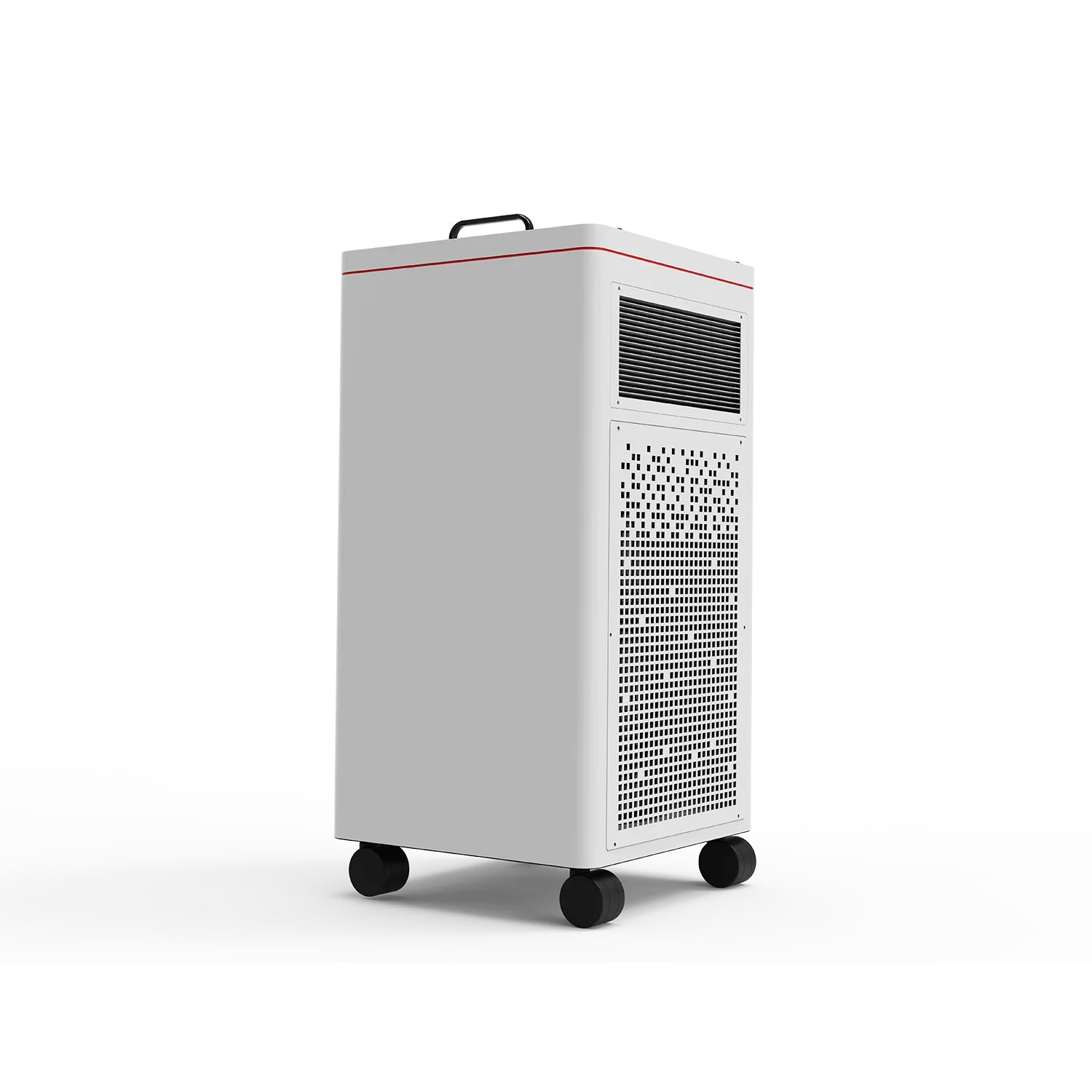
Bager is a medical grade air sterilizer supplier specializing in the R&D and production of plasma|ultraviolet|ozone air sterilizers, bed unit sterilizers, UV sterilizers, and other sterilization and purification equipment. It has been focusing on the air purification industry for many years and is committed to providing customers with plasma air sterilization. machine, ultraviolet air sterilizer, medical grade air sterilizers, etc. If you want to know more about air sterilizer information, please pay attention and consult.
What are the operating room disinfection methods? Hospital UV Air Sterilizer supplier summarized some.
1. Heat sterilization: Hospital UV Air Sterilizer supplierA method that uses high temperatures to kill microorganisms (above the temperature at which viruses grow). Principle of heat sterilization: When high temperature acts on microorganisms, it first causes an increase in the rate of physiological and biochemical reactions in cells. Temperature-sensitive substances in the body, such as proteins and nucleic acids, will be irreversibly damaged as the temperature increases. The changes in intracellular protoplasts and the destruction of enzymatic structures make the cells lose the coordination of life functions and stop growth and development. As the high temperature continues, the protoplasm in the cell will solidify, the structure of the enzyme will be completely destroyed, the activity will disappear, the biochemical reaction will stop, the metabolic activities such as osmotic exchange will disappear, and the cell will die. Thermal sterilization can be divided into two categories: dry heat sterilization and moist heat sterilization.

Divided into liquid filtration and air filtration. It uses a mechanical method to design a filter screen with a filter hole smaller than that of bacteria to make various filters. Filtration allows only the liquid culture medium or air to flow out of the screen, and various microorganisms remain on the screen, so as to achieve the purpose of sterilization. This method is suitable for heat-labile, small-volume liquid media. The working principle of the ultra-clean workbench is to filter and sterilize the air-carrying bacteria to form sterile air, which is blown out of the wind tunnel to keep the workbench in a sterile state. The advantage of filtration is that it does not destroy the chemical composition of the various substances in the medium. Commonly used filters are made of diatomaceous earth, asbestos, ceramsite or collodion, and nitrocellulose filter membranes.
3. Radiation UV ultraviolet high-pressure mercury lampSterilization using the energy generated by radiation is called radiation sterilization. Radiation can be divided into ionizing radiation and non-ionizing radiation. Alpha rays, beta rays, gamma rays, X rays, neutrons and protons, microwaves, etc. belong to ionizing radiation, while ultraviolet rays, ozone, sunlight, etc. belong to non-ionizing radiation.
Bager is a professional hospital UV air sterilizer supplier, if you need it, please contact us!
UV machine for disinfection is a common infection control method in hospitals. Let the UV machine for disinfection exporter take you to understand the structural characteristics of UV machines for disinfection and the disinfection principle of UV machines for disinfection.
In recent years, UV machine for disinfection has become the main air disinfection tool in hospitals. The 2002 edition of "Technical Specifications for Disinfection" was included for the first time in the ultraviolet disinfection machine. At present, the ultraviolet disinfection machine has entered the market, with good disinfection effect, low price, and convenient use, and has been recognized by medical institutions at all levels.
UV machine for disinfection is mainly composed of a filter, centrifugal fan, negative ion generator, super ultraviolet lamp, and shell. The centrifugal fan draws some of the dirty air from the closed room into the interior of the sterilizer. Through the initial effect filter at the inlet of the blower, the large and small dust in the air is filtered. The bacteria in the flowing air are sterilized by the ultra-intensive UV lamp installed inside the machine. The centrifugal fan discharge port sends clean air that kills dust and bacteria back to the room. The negative ions generated by the negative ion generator spread throughout the room with the wind. The bacteria and viruses in the room air become inactive, and the negative ions play an extensive sterilization effect again. After the disinfection cycle, this kind of continuous convection of indoor air circulation can achieve the purpose of indoor air purification and sterilization.
UV machine for disinfection has the following six advantages:1. DynamicUnder dynamic conditions, it can be sterilized and purified throughout the day and is harmless to the human body and medical equipment. When the plasma air disinfection purifier sterilizes the indoor air, neither the patient nor the medical staff needs to leave.
The plasma sterilization and disinfection effect are strong, the action time is short, and it cannot reach high-intensity ultraviolet rays.
2. Environmental protectionPlasma sterilization and disinfection can work continuously without producing ultraviolet rays and ozone, avoiding secondary pollution of the environment.
3. EfficiencyThe plasma sterilization effect is strong and the action time is short. While disinfecting the air, formaldehyde, benzene, ammonia, and xylene in the air can decompose harmful and toxic gases, and also have the functions of removing dust, blood, deodorizing, decomposing formaldehyde, smoke, and other organic gases.
4. Energy savingThe power to turn on the power of the plasma air sterilizer is one-third of that of the UV sterilizer, which is very power saving. Applicable to a room of 120 meters, it can save 150 watts of plasma, more than 450 watts of UV machines, and more than 1,000 yuan a year in electricity bills.
5. DurabilityThe plasma generator has a long service life and is maintenance-free, with a normal service life of more than 10 years, and no need to replace the bactericide.
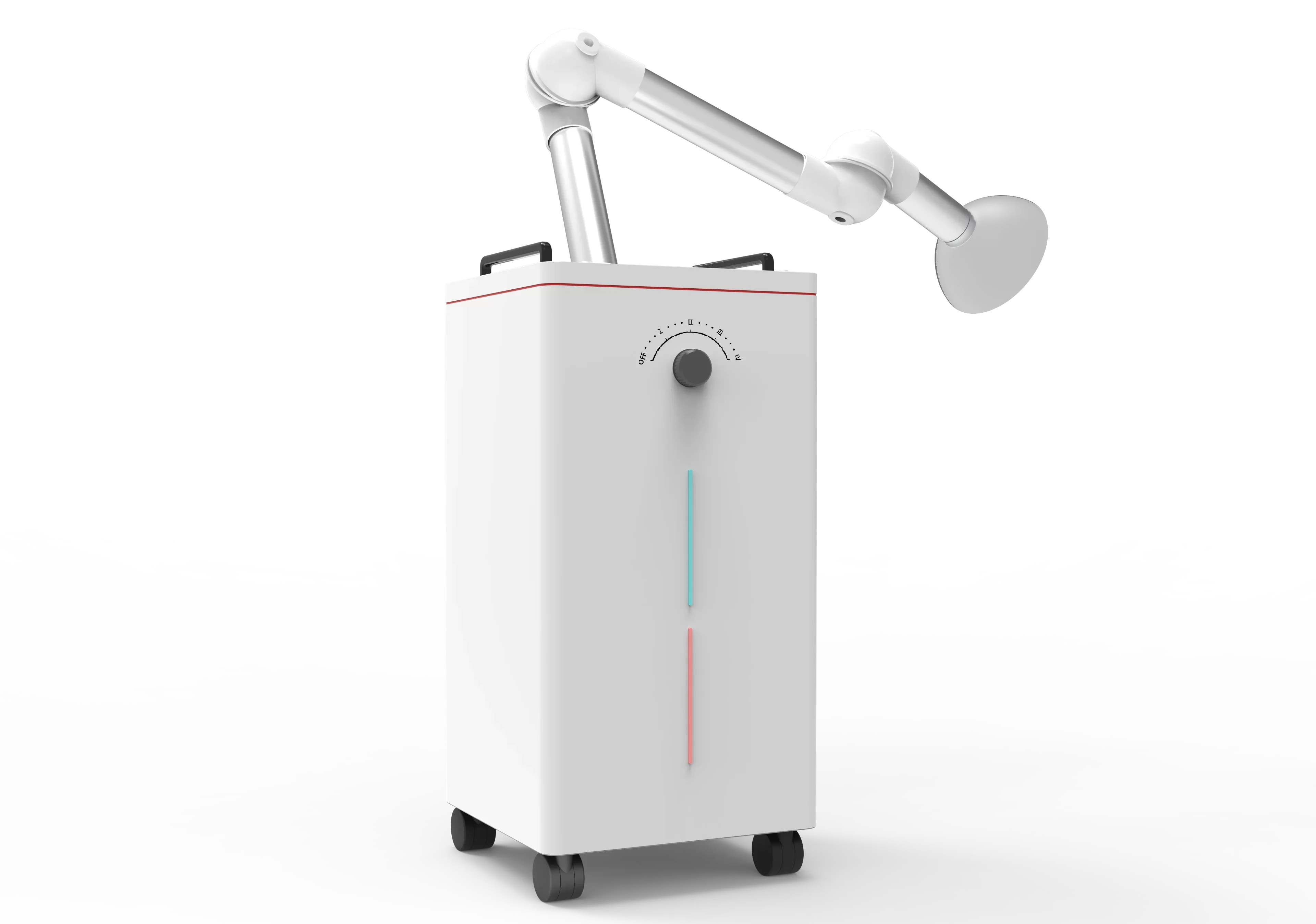
The above are the structural characteristics of UV machines for disinfection and the disinfection principle of UV machines. As a professional UV machine for disinfection exporter, Bager is responsible for selling different types of UV machines for disinfection. Welcome to consult.
